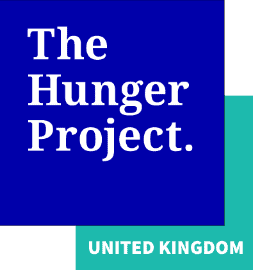 Here in the UK we recently had a “Fair Trade fortnight” (28/02 – 13/03). The Fairtrade Foundation asked consumers to celebrate by “showing off about buying Fair Trade which offers 7.5 million people in the developing world a more secure future”.
Here in the UK we recently had a “Fair Trade fortnight” (28/02 – 13/03). The Fairtrade Foundation asked consumers to celebrate by “showing off about buying Fair Trade which offers 7.5 million people in the developing world a more secure future”.
The Fair Trade scheme aims to address price volatility of commodity markets by guaranteeing that producers receive an above-market “fair” price (in the case of coffee, for example, Fair Trade farmers receive a minimum of $1.26 per pound for their coffee, or $0.05 above the market price) and a social premium paid to the producers’ co-operatives. Fair Trade sales in the UK in 2009 reached £799m, up 14% on 2008. The Fairtrade Foundation received a total income of £8.7million in 2009 (the majority of it from licence fees for products).
Although Fair Trade seems to receive almost unequivocal support from the development community (for example, in 2009 it secured a £12million grant from the UK government) and the general public, the voices of dissent are becoming stronger.
The Economist has pointed out that a price guarantee on Fair Trade goods and a requirement of a certain form of labour organisation discourage poor farmers from innovation or diversification. The low price ought to send a signal to farmers to switch to growing other crops. For example, during the coffee crisis of 2002, the prices below costs did not emanate from some unfair trading system but an increased supply.
Several of the Fair Trade certified co-operatives in Costa Rica are situated in an area with inferior conditions for coffee production, whilst only one Fair Trade co-operative is located in the best one. For the farmers without perspective to sufficiently increase their productivity to remain in a highly-competitive sector with low returns may not be a good long-term strategy. For example, between 1998 and 2001, poverty rates increased by more than 2% among those farmers who remained in the coffee sector while rural poverty rates as a whole fell by more than 6%.
Furthermore, Fair Trade is an inefficient way to get money to poor producers. According to various estimates, less than 25% of the Fair Trade premium paid by consumers reaches farmers (which becomes a mere 10% in case of a cup of a Fair Trade coffee in a café). No charity or NGO would withstand public scrutiny if such tiny percentages of money raised were reaching the actual beneficiaries.
In 2009 the Fairtrade Foundation spent £2.6M on public education and awareness. It might have led consumers to believe that they are making much more of a difference than they actually are. Here is an interesting short movie “The Bitter Aftertaste” produced by an educational charity Worldwrite: http://www.casttv.com/video/dwwgvh1/worldwrite-the-bitter-af… They claim that Fair Trade is really about making Western consumers feeling better rather than significantly changing conditions in the developing world.
The same conclusion seems to be reached by The Institute of Economic Affairs. Its recent in-depth report into Fair Trade said that the scheme “often better reflected the prejudices of western consumers than the needs of poor producers”.
So although Fair Trade has some positive effects, it has a number of serious weaknesses. It is really important that the Fair Trade initiative does not lead consumers into thinking that conventional international trade is exploitative and unfair. It has a large potential to promote development.
According to the Overseas Development Institute, “the Fair Trade labelling scheme represents a very narrow definition of what is good for development, and concerns about food miles may jeopardise exports for over a million poor farmers. How can consumers be given better information about the broad development impacts of their purchases?” They suggest an introduction of a new “Good For Development” label – http://www.odi.org.uk/events/documents/322-presentation-kare…
Any thoughts?
 Ekaterina Mitiaev was Country Director for The Hunger Project UK from 2005 until November 2009.
Ekaterina Mitiaev was Country Director for The Hunger Project UK from 2005 until November 2009.
